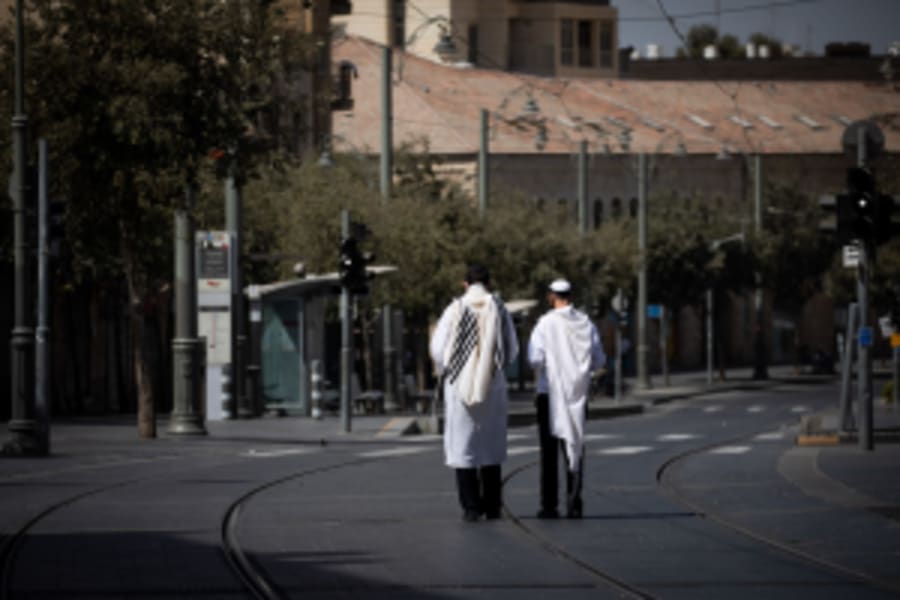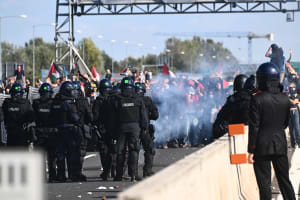Israeli architects discuss safe room limitations and the future of bomb shelter design

It’s a discussion you will most likely only hear in Israel: the future of bomb shelters and realistic design of safe rooms in urban areas. Architects Shlomit Zeldman, Benny Perry and Ofer Arusi share thoughts and innovative building design ideas to protect Israel’s residents from attack.
Since the Civil Defense Law of 1951, all new buildings in Israel have been required to include bomb shelters. Beginning in 1992, every individual residential unit must also have its own safe room. These legislative and building requirements have made Israel remarkably well-prepared for missile attacks compared to many other countries. However, the recent war with Iran revealed vulnerabilities in Israeli planning and infrastructure.
“Even standard safe rooms can be damaged by direct hits, but statistically, they protect in most cases,” Architect Benny Perry, founding partner of V5 Architects asserted according to YNet. “No space offers total safety,” he said.
Shlomit Zeldman, head of Shlomit Zeldman Architecture and Interior Design, went further: “The reinforced security room is not the be-all and end-all; it’s time for systemic thinking,” she said.
Though almost everyone who was in a protected space survived the recent attacks from Iran, six were killed even while in their safe room – two in a direct missile hit in Petah Tikva and four elderly people who had huddled in a safe room in Beersheva, early on the last day of the war.
Safe rooms are typically on an outside wall of apartments, and double as a bedroom or office space when not used as a bomb shelter. They have saved many lives, especially over the last couple of years, but they are not designed to withstand a direct hit from the kind of heavy warheads that were fired from Iran. Now Zeldman has suggested designing new housing with safe rooms nearer the core of the building, close to elevator shafts and stairwells for improved safety.
“An internal room does not meet the public’s expectations for a bedroom,” Zeldman conceded. “It is often dim and poorly ventilated compared to a safe room with an external window, which limits everyday use.” She suggested vertical shafts for ventilation and emergency escape as a potential solution, if shared floor-level protected spaces (mamak) were to be created near the core of the building.
Another issue that has been highlighted in the recent attacks from Iran has been access (or lack of it) to bathrooms. In the past the advice has been to stay in shelters for at least ten minutes due to the possibility of falling shrapnel even after a rocket is intercepted. Pieces of shrapnel the size of a bus have been found and put on display in several places, with one such piece killing the only casualty of the first Iranian ballistic attack last year – a Gazan man in Jericho. Now with Iran firing much heavier grades of missiles, the advice has changed.
During this latest conflict the population were instructed by Home Front Command to stay in their protected spaces until notified it was safe to come out again, due to the increased severity of risk. With undefined time in shelters, the majority of which do not have toilet facilities, the matter of bathrooms becomes more urgent. Perry suggested that safe rooms in new buildings should be designed with extended reinforced areas that include safe rooms and bathrooms.
The question of reinforcing entire structures has also been raised, as experts debate the balance between safety and quality of life in safe room design. Perry promotes strengthening the whole structure of new buildings rather than just individual rooms. Industrialized methods, such as the Bernovitch method, mean entire buildings can be cast as monolithic concrete boxes more resistant to attack. “Buildings constructed this way have shown only localized damage and maintained stability during impacts,” he explained.
He also suggested reinforcing existing rooms with steel plates and safe room doors and windows as a realistic way to bolster protection in older buildings and expressed the importance of addressing safety needs without turning homes into permanent survival bunkers.
Ofer Arusi, partner at Ada Karmi-Melamed Architects, expressed concern about the idea of designing new buildings to be fortified throughout. “It’s nearly impossible architecturally and financially,” he said, pointing to thick walls, limited openings and a compromised quality of life. Arusi prefers the idea of smartly integrated functional protected spaces, such as safe rooms designed as bathrooms with showers and vestibules which could meet the challenge to combine safety with comfortable everyday use.
Arusi referred to the way underground networks connect transit stations, malls and public buildings in Japan as a possibility. “There, these systems address population density or extreme climates and serve residents year-round,” he said, adding, “In Israel, such infrastructure is for emergency use only, raising questions about the feasibility of the significant investment required.”
“We must ask how Israeli cities will look when threats are part of everyday life,” he said. “To keep the economy functioning and people safe, protection solutions need to be accessible, integrated and aesthetically compatible with public spaces. Underground shelters at transit stations, architecturally treated concrete shelters in parks or boulevards – these concepts represent a needed shift from solely home-based protection to comprehensive urban resilience.”
Footage of the alarming damage done to high rise towers as rockets careened into apartment blocks and carved chunks out of the buildings might also have an impact on building design going forward.
Underground shelters provide better protection than safe rooms, although the amount of time it takes to reach them means a safe room often ends up being the better option. With the benefits of underground safety solutions, Zeldman talked about the likelihood of increased interest in low-rise or ground-level buildings. “A well-planned shelter with good access, ventilation and capacity for extended stays is essential." She also predicted that public initiatives in urban areas would develop accessible, shared shelters in local neighborhoods.

Jo Elizabeth has a great interest in politics and cultural developments, studying Social Policy for her first degree and gaining a Masters in Jewish Philosophy from Haifa University, but she loves to write about the Bible and its primary subject, the God of Israel. As a writer, Jo spends her time between the UK and Jerusalem, Israel.
You might also like to read this:
















